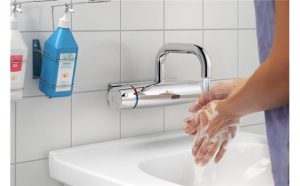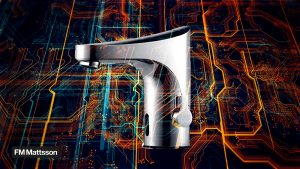What is IoT (Internet of Things)?
The Internet of things (IoT) is the network of physical devices, vehicles, and other items embedded with electronics software sensors and actuators network connectivity which enable these objects to collect and exchange data.
The IoT allows objects to be sensed or controlled remotely across existing network infrastructure, creating opportunities for more direct integration of the physical world into computer-based systems and resulting in improved efficiency, accuracy and economic benefit in addition to reduced human intervention. Experts estimate that the IoT will consist of about 30 billion objects by 2020.
IoT Impact on Facilities Management
In this new digital age, we find ourselves beginning to transform the way facilities are managed. Sensors in buildings are becoming cheaper, smarter, and more widely used. New connections are being forged, not just between devices in a system, but among systems in a building and buildings in a portfolio. Now more than ever the unprecedented volume of data coming from buildings is being converted into useful information by sophisticated analytics. For facility managers, there’s nothing new about the idea of connecting devices to enable data sharing and control. But the Internet of Things, or IoT, changes the game in important ways.
For one thing, there are more tools and standard offerings that enable  use of newly available data. The balance has shifted to the use of this data. Widespread interoperability has enabled the move beyond simple applications like monitoring alerts to compound applications involving multiple systems.
use of newly available data. The balance has shifted to the use of this data. Widespread interoperability has enabled the move beyond simple applications like monitoring alerts to compound applications involving multiple systems.
The Building Internet of Things is producing a multitude of new choices. There are cloud-based analytics, water systems involved in temperature control, new options for managed services, and software that sits on top of legacy systems to offer new levels of monitoring and control. “Be prepared for lots of newness and lots of things you might not have expected.
The top priority for facility managers interested in the Building Internet of Things is to learn about the capabilities and limitations of new technologies. That’s the first step on the road to deciding how, when, and where to put digital strategies into action. Here’s a look into the IoT toolbox currently available from Challis Ag+ Water Management System
The Internet of Things is reshaping the operation of water supply systems. Today, cloud-based analytics can monitor operations, capture trends, and manage settings, while a connection to the utility enables demand response. As IoT infrastructure expands, we will start to see an ecosystem of tools and services develop that will make water supply systems more efficient and easier to operate. For example, continuous commissioning tools, like automatic notification of performance problems, temperatures, and flows has now become cost-effective. Challis Ag+ WMS IoT capability can automate regular tasks such as duty flushing and help distill mounds of data into actionable tasks
IoT Enabling systems such as Challis Ag+ intelligent water management system to use real-time remote access to systems in remote locations, making it possible to diagnose errors remotely change working temperatures, initiate duty flushes and ensure that, if there is a fault or service call is needed, the tech comes with the right parts. Read More
#ChallisWMS
#ChallisAg+

